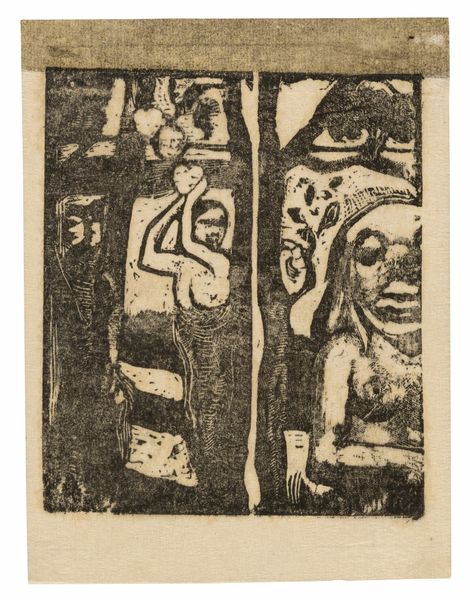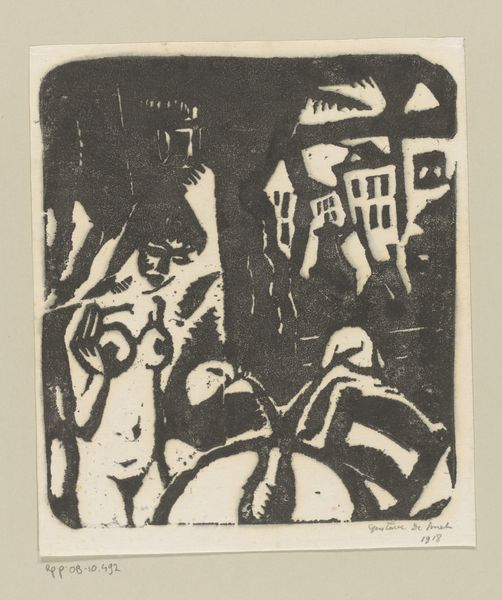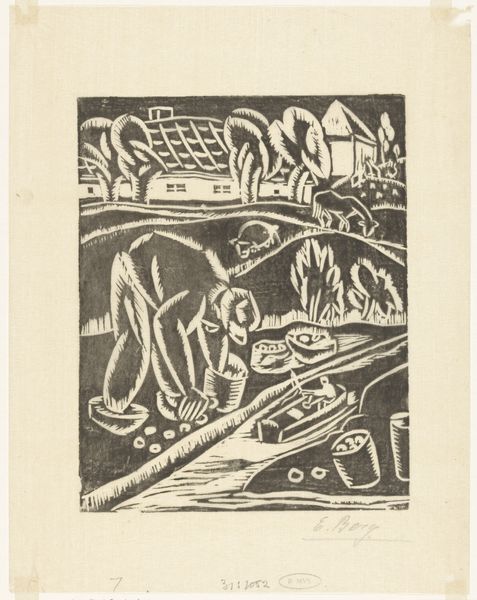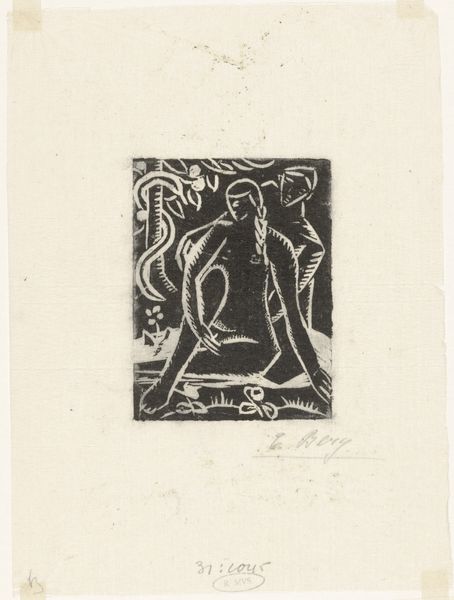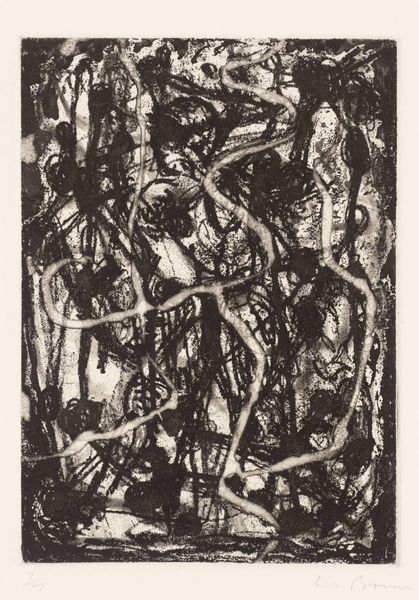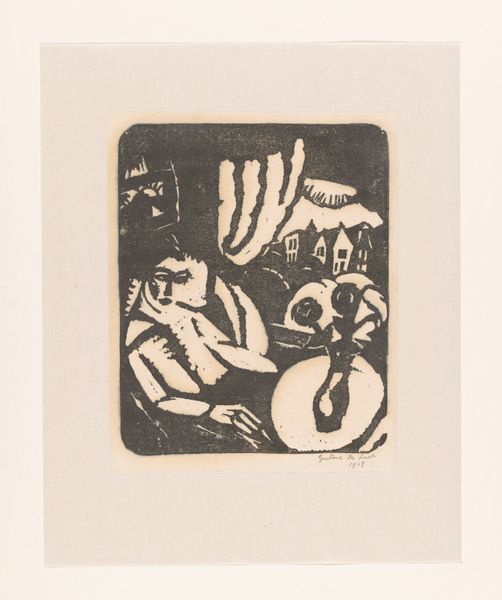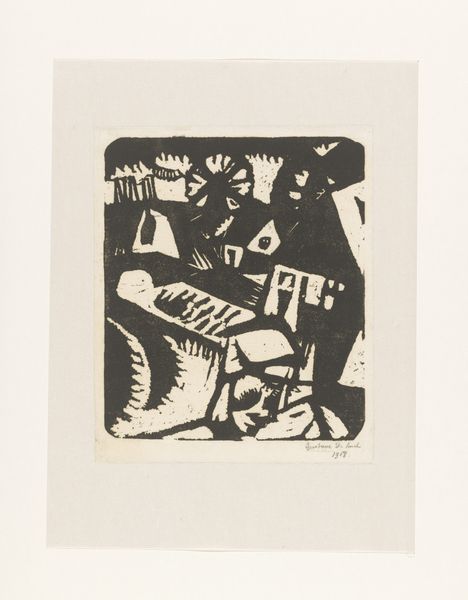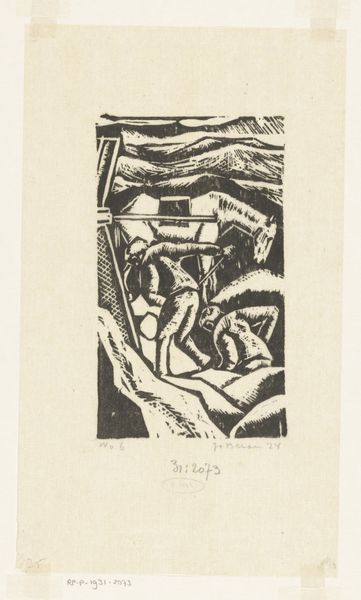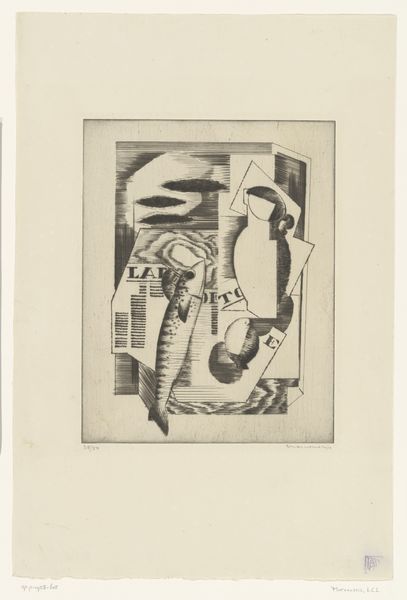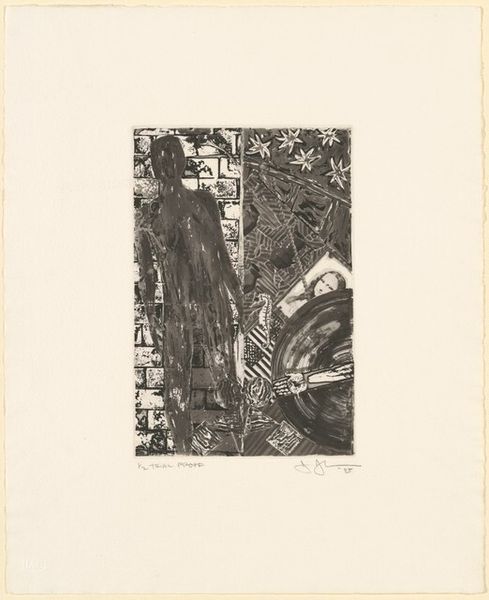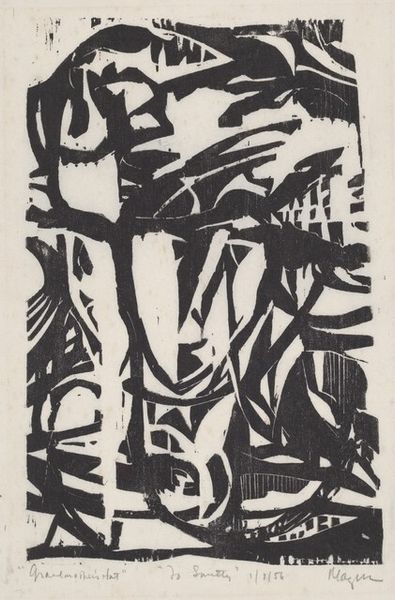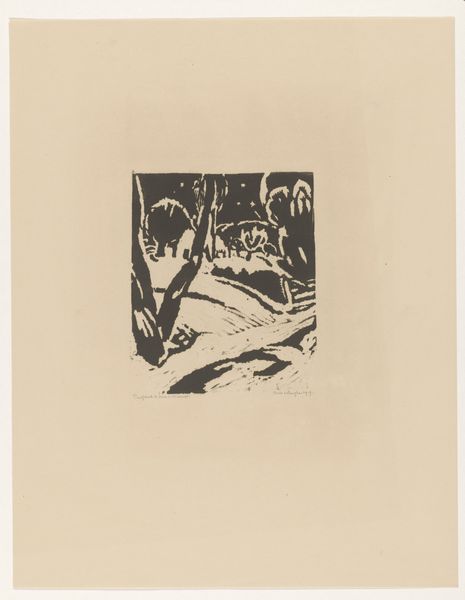
drawing, print, paper, woodcut
#
drawing
# print
#
figuration
#
paper
#
woodcut
#
france
#
symbolism
#
post-impressionism
#
nude
Dimensions: 105 × 90 (image); 153 × 112 mm (sheet)
Copyright: Public Domain
Curator: Let’s turn our attention to Paul Gauguin's woodcut print, "Woman Picking Fruit and Oviri," created between 1895 and 1896. Editor: My first impression is… powerful. Almost oppressive, the high contrast and densely packed figures create an intense, unsettling mood. It’s stark, graphic, and feels deliberately unsettling. Curator: Gauguin was deeply engaged with the politics of imagery, particularly around his representations of Polynesian women. How did his positioning as a European artist shape the narratives he constructed around these subjects? Editor: Exactly. Consider the title – it yokes together a mundane act with "Oviri," a Tahitian god associated with mourning and death. Gauguin exoticizes Polynesian culture, drawing from a potent mix of mythology and observed life but often through a lens of colonial power dynamics and sexual objectification. Curator: Woodcut was a key medium through which these representations circulated and became accessible to a broader public. We should keep in mind how Gauguin purposefully fashioned himself as a sort of untutored artist aligned with so-called "primitive" cultures. This aligns with his critiques of industrial society. Editor: It's a constructed primitivism though, and very loaded with contemporary European anxieties around civilization and the feminine. The dark, brooding figures definitely speak to the anxiety of that era, one also dominated by figures such as Nietzche and Freud. It’s as much about what Europeans thought of themselves as what they imagined Tahiti to be. Curator: And, if we examine its exhibition history, this print and others like it gained prominence through both commercial galleries and academic shows, cementing Gauguin's place in the canon while simultaneously circulating simplified and potentially harmful portrayals. Editor: I’m left considering what is revealed and what remains concealed through Gauguin's particular visual language. How can we engage critically with the beauty while remaining alert to the complexities of its context? Curator: An essential question. Reflecting on the layers of history within a work—from creation to its life in galleries—opens deeper understandings and possibilities of decolonizing our interpretations of it.
Comments
No comments
Be the first to comment and join the conversation on the ultimate creative platform.
